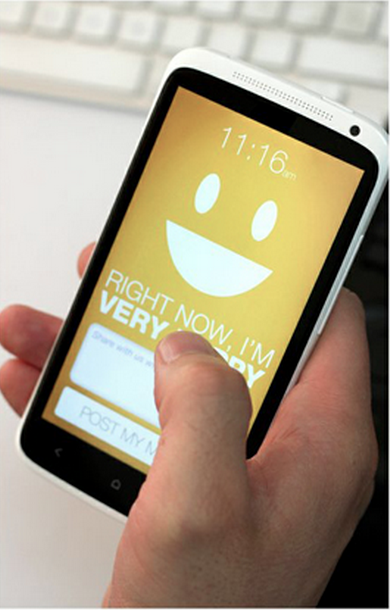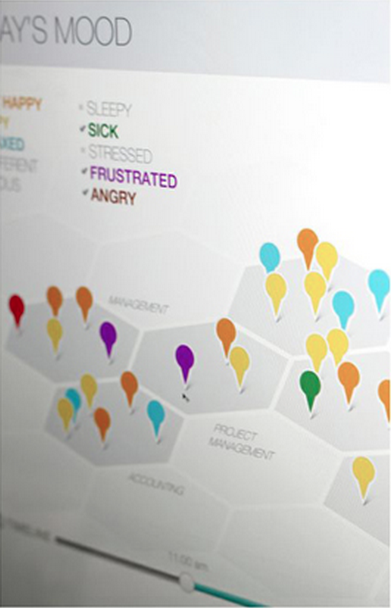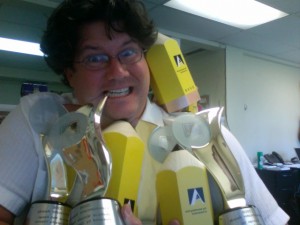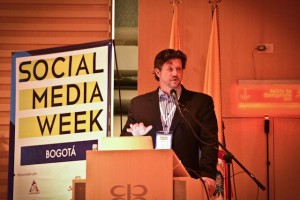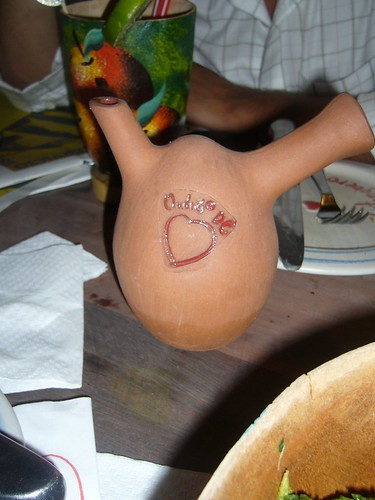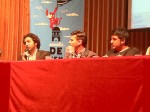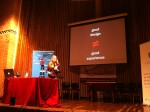[This post was originally written by Chad on Medium]
By now, most of the world knows about Jon (not John, flip) Stewart’s announcement to leave the Daily Show. I was sitting on my couch watching his latest episode when it showed up in my Twitter feed. To say I was bummed would be an understatement. I, like most people in this world, feel I carry a very full schedule… wife, two (almost three!) kids, job, friends, all while trying to balance it in NYC. The Daily Show is one of the few things I consistently watch each day. It’s my way of decompressing from everything that the day usually throws at me.
Everyone has come out with their piece on “Who should replace him and why”. This is not what one of those pieces. To be honest, I’m one of those die hards who would prefer we didn’t have to wonder who could replace him. What has been great reading are all the articles around the different people he, in essence, “launched”. The list is pretty fantastic.
Stephen Colbert, Ed Helms, Josh Gad, Steve Carell, and Rob Riggle.
Those are just a few of the bigger names that almost anyone in the US would recognize today. The list is so much longer, and you should Google it. They are some of the funniest people in comedy today.
This got me thinking about the idea of “platforms” and what it means to be one: to function with this idea that my role is People As A Service (PaaS). I’ve got a tech background (was just at a SaaS startup) so platforms have always been something I’ve been technically obsessed with creating. To build something that better and smarter things could be built upon is what most startups aim for, and rightly so.
But how do I do this as a person?
How do I ensure I can be a platform for others?
It might seem odd thinking that you are being built upon, but you are, whether you realize it or not. This is especially true for those of us that have many people reporting to us. Most people like to think linearly about these things, and it’s just not possible. We don’t exist on an island. We’re connected. Bottom line. People choose to build on platforms for many different reasons. Sure, some do it for solely for notoriety. I mean who wouldn’t want the gig as a correspondent on the Daily Show, or to work at Apple, Nike, Google?
I think ultimately the reason people take a certain position is because they’ve seen a precedent for it being a safe place to grow, and to learn. They see it as safe, and not in a bad way.
What makes Apple, Twitter, FB or Google such popular platforms is the deeper fact that they are safe to build on (as a piece of soft/hardware). Why do you think no one builds on Microsoft (unless Microsoft begs and pays)? Sure, all the guys I mentioned first offer innovative ways to reach people, but it’s because they’re safe & have proven themselves that people are drawn to them. That didn’t happen overnight of course. As with Jon, it took time to establish that reputation in the industry. It takes a level of trust and time to be a real platform (yea sorry, it can’t happen overnight).
We have to stop thinking of “safe” as a bad word. That it’s indicative of doing something that doesn’t matter, or not challenging. Amazing things can happen when you feel safe.
Every interview I’ve ever read with one of the new correspondents talking about making it on the show always had this phrase, “Jon just told me to be myself, to not try to be anyone else.” I can’t imagine a safer feeling walking into a situation, especially when you know you had people like Stephen Colbert come before you. Feeling safe is something we all want and if we were all honest, it’s something we want more than we let on.
Like any good platform, the future of what comes from it depends on how solid it is at its core.
It’s hard to build a safe environment, because it means people have to have the ability to try and fail. To build and to break. Most places/individuals, unfortunately, don’t work that way. It always makes me laugh when a leader tells someone to “run with something”, then basically follows that with all these “do’s and don’ts”. If we’re a solid platform, we should be okay with risk because we know we’re secure. Truth be told, most innovation doesn’t come from a lack of smart or creative people. It comes from people feeling safe enough to explore the boundaries (which means occasionally crossing them). It comes from them feeling safe enough to fail despite fear of what might come.
I have to be able to inspire trust in me as a leader so that when you break something you feel safe knowing it won’t shake me to my core. This is what most people fail to accomplish. Often as leaders, we’re terrified of people failing because we’re terrified that it could expose our weakness.
This kind of thinking stifles everything. Creativity, growth… and the list could go on. I get that people need guardrails and boundaries, and I believe great creativity comes from having them. The Daily Show provides guardrails in the form of segments to cover a topic. The rest is up to the correspondent – the angle they take, the type of humor they choose to leverage, etc. Ultimately, whether the bit fails or is a hit doesn’t affect what we’re all there for- Jon. He’s a platform, and like any good one, he’s solid.
He knows that if a bit fails, the person will only get better, and that the best thing he can do is continue to do what he does best, make us laugh. By being incredible at his craft, he makes it safe for everyone else to do the same.
As a leader, being/becoming a platform leaves us with one of two challenges:
- Step up your game: Most of us know leaders that are okay with average. It’s amazing how much this affects the ability of people around them to excel. This is where playing it “safe” becomes a bad thing. People can only build on top of you as a platform if you’re big enough to support them.
- Know who you are: This one is hard because there isn’t a linear answer to discovering this. It requires work; it requires developing your own version of building and breaking. It’s also something that is never-ending. Remember, a good platform might happen natively (through personal revelation) or from a 3rd party source (someone/thing around you).
So, how are you doing with helping the people around you feel safe?
If they break something, are you more worried about what it’ll do to you or are you secure enough to handle it?
There is, after all, a reason why what Jon has created what is being referred to as a legacy, and why most of us struggle to think about how someone can replace him. I do know this: whoever it will be will have to be more than solely funny because there are a lot of people who can “do” funny. They just damn sure better be secure enough to consistently build the future of funny for a new generation of watchers. That’s something only someone who has a true understanding of themselves as a platform can provide.
Here’s looking forward to The Daily Show with…
